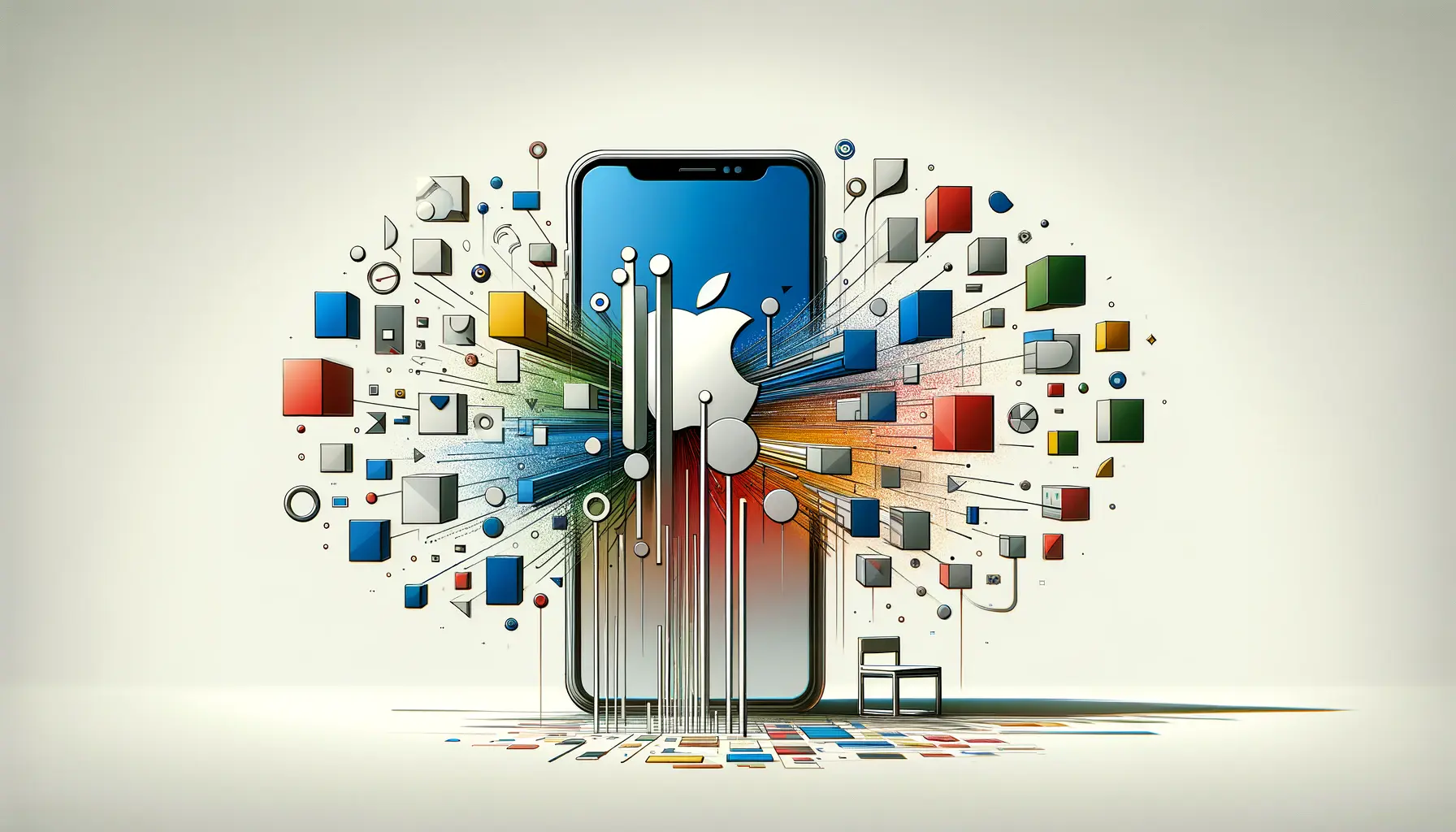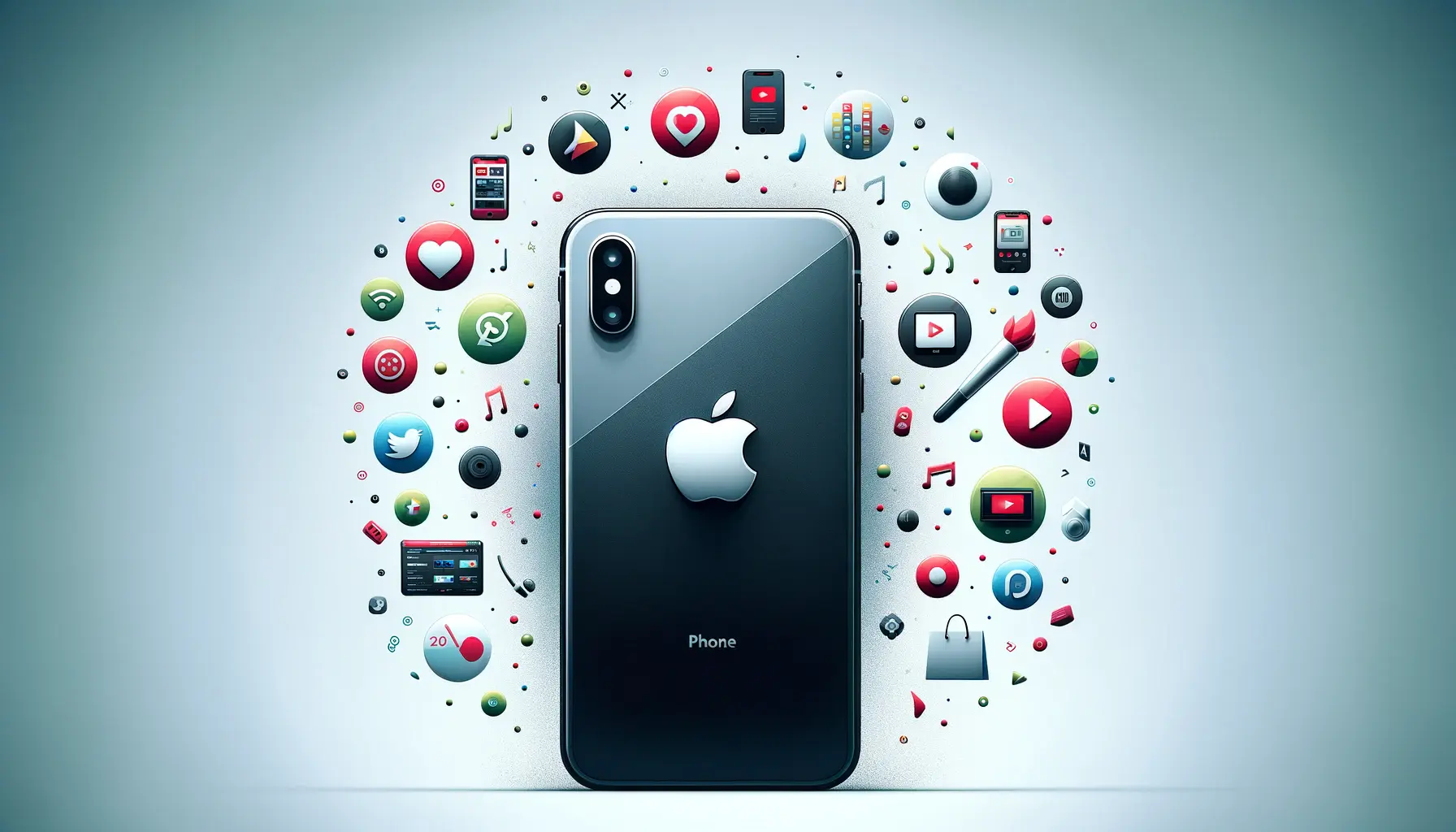The realm of digital advertising is witnessing a transformative era, especially within the ecosystem of Apple’s platforms.
The introduction of Apple Search Ads and the evolution of ad personalization techniques have marked a significant shift in how brands connect with their audience.
This change is not just about the technology but also about the philosophy behind advertising, where relevance and user privacy stand at the forefront.
Apple’s approach to ad personalization, particularly through its Apple Search Ads platform, is reshaping the landscape of digital marketing.
By leveraging user data in a privacy-conscious manner, Apple is setting new standards for how ads are tailored and delivered.
This evolution is crucial for marketers to understand, as it impacts the strategies they must adopt to effectively engage with their target audience within the Apple ecosystem.
- Understanding Apple Search Ads and Ad Personalization
- The Evolution of User Privacy in Digital Advertising
- Impact of iOS Updates on Ad Personalization
- Best Practices for Ad Personalization on Apple Platforms
- Case Studies: Success Stories in Apple Ad Personalization
- Future Trends in Apple Ad Personalization
- Challenges and Solutions in Apple Ad Personalization
- Embracing the Future of Ad Personalization in Apple Ads
- FAQs on The Future of Ad Personalization in Apple Ads
Understanding Apple Search Ads and Ad Personalization
What Are Apple Search Ads?
Apple Search Ads is a platform that allows advertisers to place ads within the App Store’s search results.
These ads enable brands to promote their apps at the very moment potential users are searching for related terms.
What sets Apple Search Ads apart is its commitment to user privacy and the intelligent use of data to ensure ad relevance without compromising personal information.
The platform utilizes a variety of signals to personalize ads, including search queries and app download history, ensuring that users see ads that are relevant to their interests and behaviors.
This level of personalization is achieved while adhering to Apple’s strict privacy policies, showcasing a balance between effective marketing and user privacy.
The Importance of Ad Personalization
Ad personalization is the process of tailoring ads to the user’s specific interests and needs, based on their previous online behavior, such as apps they’ve downloaded or searches they’ve made.
In the context of Apple Ads, personalization plays a pivotal role in enhancing the user experience, ensuring that users are exposed to ads that are genuinely relevant to them.
This relevance not only increases the likelihood of user engagement but also aligns with Apple’s broader commitment to protecting user privacy.
By focusing on personalization within the confines of privacy, Apple Ads provide a unique value proposition for both users and advertisers.
Ad personalization in Apple Ads is a testament to the company’s innovative approach to blending effective advertising with stringent privacy standards.
The Evolution of User Privacy in Digital Advertising
The digital advertising industry has been under scrutiny for its handling of user data, leading to a growing demand for more privacy-conscious practices.
Apple, known for its commitment to user privacy, has been at the forefront of this evolution.
The company’s introduction of privacy features, such as the App Tracking Transparency (ATT) framework, marks a significant shift in how advertisers can collect and use data.
This shift towards enhanced privacy is not without its challenges for marketers.
However, it also opens up new opportunities for creating more meaningful and trusted relationships with consumers.
Understanding the balance between personalization and privacy is now more crucial than ever for advertisers operating within the Apple ecosystem.
App Tracking Transparency (ATT)
Introduced with iOS 14.5, the App Tracking Transparency framework requires apps to obtain user permission before tracking their activity across other companies’ apps and websites.
This development has had a profound impact on the digital advertising landscape, significantly limiting the amount of data available for personalizing ads.
- Impact on Advertisers: Advertisers must now rely on less granular data, pushing them to find innovative ways to personalize ads without infringing on user privacy.
- User Empowerment: Users have more control over their data, leading to increased trust in the apps they use and the ads they see.
Strategies for Ad Personalization Within Privacy Constraints
Despite the challenges posed by enhanced privacy measures, there are still numerous strategies advertisers can employ to personalize ads effectively.
These strategies focus on leveraging available data points within the framework of Apple’s privacy policies.
- Contextual Advertising: Focusing on the context in which the ad is shown, rather than personal user data, to ensure relevance.
- First-Party Data: Utilizing data collected directly from users with their consent, such as app usage patterns, to tailor ads.
- Creative Optimization: Crafting ad creatives that resonate with the target audience based on general interests and behaviors.
Navigating the evolving landscape of digital advertising requires a deep understanding of both the technological and regulatory changes shaping the industry.
Impact of iOS Updates on Ad Personalization
The release of iOS updates, particularly those enhancing user privacy, has significantly impacted the way advertisers approach ad personalization on Apple devices.
These updates have introduced features that prioritize user consent and transparency, fundamentally altering the data landscape for marketers.
Advertisers have had to adapt to these changes, shifting their strategies to comply with Apple’s privacy standards while still striving to deliver personalized advertising experiences.
The impact of these updates extends beyond just compliance; it also influences the effectiveness of ad campaigns and the overall user experience.
Adapting to Limited Tracking Capabilities
With the introduction of features like the App Tracking Transparency (ATT) framework, advertisers are now faced with limited tracking capabilities.
This limitation challenges traditional ad targeting methods but also encourages more innovative approaches to personalization.
- Utilizing Segmented Data: Advertisers are focusing on broader audience segments based on available data points that comply with privacy regulations.
- Enhancing On-Device Personalization: Leveraging machine learning algorithms to process data on the user’s device, ensuring privacy while personalizing ads.
Emphasizing User Experience and Trust
In response to the heightened focus on privacy, there’s a growing emphasis on improving the user experience and building trust through transparent advertising practices.
Advertisers are finding value in being upfront about their data usage policies and offering users more control over their ad experiences.
- Providing Clear Opt-In Mechanisms: Ensuring users are fully aware of what data is being collected and how it’s used for ad personalization.
- Focusing on Value Exchange: Offering users tangible benefits in exchange for their data, such as personalized content or rewards, to encourage opt-in.
The iOS updates represent a pivotal shift towards a more privacy-centric digital advertising ecosystem, where user trust and experience are paramount.
Best Practices for Ad Personalization on Apple Platforms
In the evolving landscape of Apple’s advertising ecosystem, adopting best practices for ad personalization is crucial for marketers aiming to effectively engage their audience.
These practices not only comply with Apple’s stringent privacy policies but also enhance the user experience, making ads more relevant and engaging.
Understanding and implementing these best practices can significantly improve the performance of ad campaigns on Apple platforms, ensuring that advertisers can reach their desired audience in a meaningful and respectful manner.
Focus on User Experience
Putting user experience at the forefront of ad personalization strategies is essential.
Ads should be designed to add value to the user’s journey, seamlessly integrating with the content and context in which they appear.
This approach not only respects the user’s privacy but also increases the likelihood of engagement.
- Design ads that are relevant and useful, enhancing the user’s interaction with the app or platform.
- Ensure ads are non-intrusive, complementing rather than disrupting the user experience.
Leverage Apple’s Privacy-Friendly Tools
Apple provides a range of tools and frameworks designed to help advertisers personalize ads while respecting user privacy.
Utilizing these tools effectively can help advertisers navigate the challenges of ad personalization in a privacy-centric environment.
- SKAdNetwork: Use Apple’s SKAdNetwork for attribution while maintaining user anonymity.
- Contextual Targeting: Employ contextual targeting methods that rely on the context of the user’s current activity rather than personal data.
Optimize Creative Content
The creative aspect of ads plays a significant role in personalization.
Optimizing ad creatives based on general user interests and behaviors that comply with privacy regulations can drive higher engagement rates.
- Test different creative variations to identify what resonates best with your target audience segments.
- Use dynamic creative optimization (DCO) technologies to automatically adjust ad content based on performance data.
Adhering to best practices for ad personalization on Apple platforms requires a balance between innovative marketing strategies and a deep commitment to user privacy.
Case Studies: Success Stories in Apple Ad Personalization
Exploring real-life success stories of ad personalization within the Apple ecosystem offers valuable insights into effective strategies and the impact of privacy-centric advertising.
These case studies highlight how brands have navigated the challenges of personalization amidst stringent privacy regulations, achieving remarkable results in user engagement and campaign performance.
By examining these success stories, advertisers can glean practical tips and inspiration for crafting their ad personalization strategies on Apple platforms, ensuring they resonate with their target audience while upholding privacy standards.
Innovative Use of Contextual Targeting
One notable success story involves a leading e-commerce brand that leveraged contextual targeting to enhance ad relevance without relying on personal user data.
By analyzing the context of user searches within the App Store, the brand was able to present highly relevant app ads, leading to a significant increase in conversion rates.
- Strategy: The brand focused on matching their ads with search terms related to their products, ensuring that their ads appeared to users already interested in similar offerings.
- Outcome: This approach resulted in a 40% increase in app downloads and a 25% improvement in conversion rates, demonstrating the effectiveness of contextual targeting.
Optimization of Creative Content
Another success story comes from a gaming company that optimized its ad creatives based on general user interests within the gaming category.
By testing various creative elements and messaging, the company was able to identify the most engaging ad formats for their target audience.
- Strategy: The company utilized dynamic creative optimization (DCO) to automatically adjust ad visuals and copy based on performance data, focusing on creatives that resonated with broad user interests in gaming.
- Outcome: This creative optimization led to a 50% increase in user engagement with the ads and a 35% uptick in game installations, showcasing the power of tailored creative content.
These case studies underscore the potential of privacy-friendly ad personalization strategies to drive meaningful engagement and business results on Apple platforms.
Future Trends in Apple Ad Personalization
The landscape of ad personalization within Apple’s ecosystem is poised for significant evolution.
Emerging trends and technological advancements are set to redefine how advertisers personalize ads while navigating the complexities of user privacy.
Staying ahead of these trends is crucial for marketers aiming to leverage Apple’s platforms effectively.
Understanding these future directions not only prepares advertisers for upcoming changes but also offers opportunities to innovate and enhance ad personalization strategies in alignment with Apple’s privacy-centric approach.
Augmented Reality (AR) and Ad Personalization
Augmented Reality (AR) technology is expected to play a pivotal role in the future of ad personalization on Apple devices.
With Apple’s continued investment in AR capabilities, advertisers will have new avenues to create immersive and interactive ad experiences that are both personalized and privacy-friendly.
- Interactive Ads: AR technology will enable the creation of interactive ads that users can engage with in real-time, providing a personalized experience based on the context of their environment.
- Privacy-Centric Targeting: AR ads will leverage contextual and environmental data, rather than personal information, to deliver personalized content, aligning with Apple’s privacy standards.
Machine Learning and On-Device Processing
Machine learning technologies, particularly those that operate on-device, are set to enhance ad personalization on Apple platforms. These technologies allow for the processing of data locally on the user’s device, ensuring privacy while enabling sophisticated personalization algorithms.
- Personalization Without Data Sharing: On-device processing means that personal data does not need to be shared with advertisers or third parties, yet allows for the delivery of highly personalized ad experiences.
- Improved User Insights: Machine learning algorithms can analyze user behavior and preferences directly on the device, providing advertisers with insights to tailor ads more effectively without compromising privacy.
The future of ad personalization in Apple’s ecosystem is marked by a harmonious balance between innovative advertising technologies and the unwavering commitment to user privacy.
Challenges and Solutions in Apple Ad Personalization
While the opportunities for ad personalization within the Apple ecosystem are vast, they come with their set of challenges.
These challenges stem from the stringent privacy regulations Apple has put in place, as well as the evolving expectations of consumers regarding privacy and ad relevance.
Addressing these challenges requires innovative solutions that respect user privacy while delivering personalized advertising experiences.
Understanding these challenges and the strategies to overcome them is essential for advertisers looking to maximize the effectiveness of their campaigns on Apple platforms.
Navigating Privacy Regulations
The introduction of privacy features like App Tracking Transparency (ATT) has significantly limited the availability of user data for ad personalization.
This limitation poses a challenge for advertisers accustomed to leveraging detailed user data for targeting.
- Solution: Advertisers can focus on privacy-friendly personalization techniques, such as contextual targeting and leveraging first-party data collected with user consent.
- Emphasizing Transparency: Being transparent with users about data collection practices and offering clear value in exchange for their data can help in gaining user consent for personalization.
Ensuring Ad Relevance Without Invasive Tracking
Maintaining ad relevance in the absence of detailed tracking data requires a shift in how advertisers approach personalization.
The challenge lies in delivering ads that resonate with the user’s interests and needs without relying on invasive data collection practices.
- Solution: Utilizing machine learning algorithms for on-device data processing allows for personalization based on user behavior without transmitting personal data externally.
- Investing in Creative Optimization: By focusing on creative content that appeals to broad user interests, advertisers can enhance ad relevance and engagement without invasive tracking.
Overcoming the challenges of ad personalization in the Apple ecosystem demands a shift towards more innovative, privacy-centric advertising strategies.
Embracing the Future of Ad Personalization in Apple Ads
The journey through the evolving landscape of ad personalization within Apple’s ecosystem reveals a future where privacy and personalization coexist harmoniously.
As Apple continues to introduce innovative features and updates, advertisers are presented with both challenges and opportunities to engage with their audience in more meaningful ways.
The key to success lies in navigating these changes with a deep understanding of privacy regulations, user expectations, and the technological advancements shaping the advertising industry.
Strategies for Future Success
To thrive in this new era of digital advertising, marketers must adopt strategies that prioritize user privacy while delivering personalized ad experiences.
This includes leveraging Apple’s privacy-friendly tools, optimizing creative content, and exploring new technologies such as AR and machine learning for on-device personalization.
By doing so, advertisers can create campaigns that resonate with users, drive engagement, and foster trust.
- Adopting a privacy-first approach to ad personalization
- Utilizing contextual targeting and first-party data effectively
- Investing in creative optimization and interactive ad formats
- Exploring emerging technologies for innovative ad experiences
Conclusion
The future of ad personalization in Apple Ads is bright, filled with potential for creating engaging and respectful advertising experiences.
As Apple leads the way in privacy-centric advertising, marketers have the opportunity to redefine how they connect with their audience, building campaigns that are not only effective but also trusted and valued by users.
Embracing the principles of privacy, creativity, and innovation will be key for advertisers looking to succeed in Apple’s ecosystem.
The journey ahead is promising, offering a path to advertising that respects user privacy while achieving remarkable results.
If you're seeking expertise in Apple Search Ads campaigns, visit our service page for professional management!
FAQs on The Future of Ad Personalization in Apple Ads
Explore common questions about the evolving landscape of ad personalization within Apple’s advertising platforms.
Apple Search Ads respects user privacy by leveraging first-party data and requiring user consent for ad personalization, aligning with Apple’s privacy standards.
ATT is a feature that allows iOS users to control which apps can track their activity across other companies’ apps and websites for advertising purposes.
Yes, advertisers can personalize ads by focusing on contextual targeting and leveraging aggregated data, within the constraints of ATT.
Machine learning enables on-device data processing for personalization, allowing advertisers to deliver relevant ads without compromising privacy.
Advertisers can navigate privacy updates by utilizing Apple’s privacy-friendly tools and focusing on value exchange and transparency with users.
Contextual advertising involves placing ads based on the content of the website or app, rather than personal user data, aligning with privacy regulations.
Creative optimization involves tailoring ad creatives to resonate with target audiences, improving engagement without relying on personal data.
Future trends include the integration of AR for immersive ads and the increased use of machine learning for on-device personalization, maintaining user privacy.














